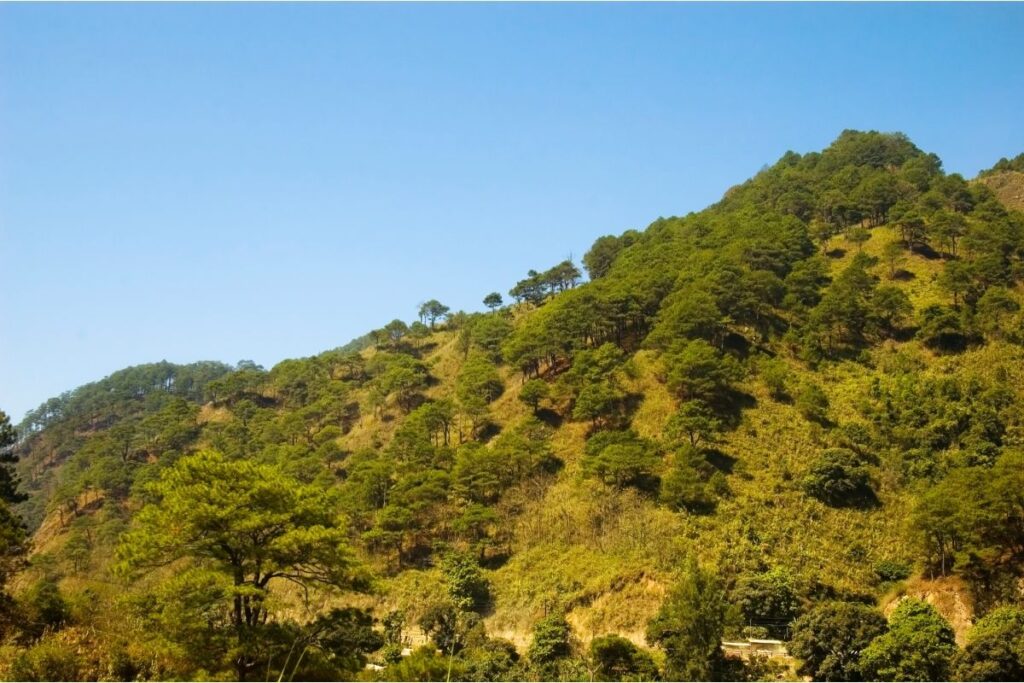Most of us can’t start our day off right without a delicious cup of coffee in the morning!
There are pretty much endless varieties of coffee drinks that can be made with different combinations of milk, espresso, syrups, and plenty of other potential additives.

However, at the heart of it all, coffee has to be grown on a plant before it can be harvested, roasted, and turned into your favorite drink.
In this article, we’re taking a look at some of the most common coffee plants across the world and finding out more about how they grow in the natural world.
What Makes A Good Coffee Plant?
As you can imagine, finding the perfect coffee plant to grow can be very profitable for a farmer. That’s why they have to consider these factors before deciding to grow any of the different varieties of coffee plants.
Cup Quality
This factor simply references how good the seed or the fruit of the plant tastes. This is generally considered to be the most important consideration because the value of coffee is largely determined by flavor quality.
Yield
Like with any farmed crop, the person growing them has to consider how much coffee can be produced per plant. Therefore, farmers will tend to favor plants that have a high yield and produce plenty of fruits and seeds each.
Disease Resistance
This is another trait that is favorable with any crop, as diseases can make a huge difference between a profitable harvest and a terrible one. The coffee plant species that are less susceptible to diseases are much more favorable for farmers.
Pest Resistance
Similarly, small animals and insects can ruin the harvest of a perfectly good coffee crop, so farmers will favor the varieties that aren’t ravished as easily.
Caffeine Content
The caffeine that you get in your cup of coffee isn’t some added chemical, it’s actually grown naturally in the coffee plant. Of course, a higher caffeine content doesn’t always mean a good coffee plant because too much caffeine can have detrimental health effects on humans. Instead, a fine balance between too much caffeine and too little is aimed for.
Maturation Rate
The final factor is the rate at which the plant matures and, therefore, how early it will produce fruit. In general, early maturation rates are preferred because less growing time is required overall.
11 Main Species Of Coffee Plants
1. Coffea Arabica
This is easily the most common and popular coffee plant in the world. In fact, it accounted for 61% of all coffee production in the world between 2004 and 2010!

It was documented to have originated in Ethiopia as early as the 12th century and has since been transported all over the world to be grown in a range of different varieties.
C. Arabica, as it is commonly written, tends to have the best balance of all the criteria we outlined in the previous section, except for disease resistance.
It is believed that C. Arabica plants would make up an even greater proportion of the world’s coffee production if it was better at resisting disease.
The seeds or ‘coffee beans’ grow in a drupe, which is often referred to as a cherry. Each drupe usually contains 2 seeds which turn a bright shade of red and purple during maturity.
2. Coffea Canephora
This species of coffee plant (known as C. Robusta) is a little less popular than C. Arabica but still makes up an impressive 43% of the world’s coffee production.

The main differences between C. Robusta and C. Arabica are to do with flavor. The former is said to produce beans with lower levels of acidity, more bitterness, and a woodier but less fruity flavor than the latter.
The plant originated in Western sub-Saharan Africa but is most commonly found in Vietnam in the modern day, where the plant makes up around 97% of the country’s coffee production.
In terms of its growing qualities, C. Robusta is surprisingly even more robust than C. Arabica.
It tends to have a much greater yield, contains 1.2% more caffeine, and is more resistant to pests and diseases.
The only thing holding this plant back in terms of its global production is the flavor. Many people find the flavor of this coffee species too harsh and thus it doesn’t sell as well on the market.
Other Species
You may have noticed that the previous two species don’t quite make up 100% of the world’s coffee production.
This is because there are other species out there that just aren’t nearly as popular.
These include species like Kapeng barako, Liberica, and Coffea charrieriana.
Interestingly, the last of those three examples produces a caffeine-free coffee bean.
Some hybrid varieties also exist between all of the other species of coffee plants in the world.
3. C. Arabica Cultivars
These are some of the different cultivated varieties of C. Arabica plant that are grown all over the world:

4. Benguet
This variety is grown in the highlands of the northern Philippines and has been around since the 19th century.

It is named after the province in which it grows and makes up the majority of crops that farmers produce here.
It was originally produced exclusively for local consumption but has since become a lucrative export to countries like Spain.
5. Jamaican Blue Mountain
Unsurprisingly, this variety is grown primarily in the Blue Mountains region of Jamaica.

Since being initially grown in Jamaica in 1728, the variety has become one of the most expensive in the world.
It is said to have a fairly mild and unbitter flavor, making it universally palatable across the globe.
Interestingly though, 80% of Jamaican Blue Mountain production is exported to Japan.
RELATED: Wake Up and Smell the Coffee: 7 Different Types Of Coffee Trees
6. Bourbon
No, this plant isn’t named after the alcoholic drink, rather the island on which it was first grown. This island is now known as Réunion and can be found off the coast of Madagascar.

It has a sister cultivar known as Typica, which produces a coffee bean of very similar flavor and quality but has a 20-30% lower yield, making it far less desirable for farmers.
However, like most C. Arabica varieties, both of these cultivars are fairly susceptible to diseases and pests.
7. Harar
This particular cultivar, haling from the Ethiopian region of the same name, is known for having a very complex, fruity flavor that has often been compared to red wine.

It is one of three major Ethiopian cultivars, along with Sidamo and Yirgacheffe.
All three of these are protected strongly by the Ethiopian government and have trademarks on their names.
8. Geisha
Having also originated in Ethiopia, Geisha coffee can now be found growing in other African countries and parts of Asia.

It has a fairly unique flavor with sweet, floral notes that give the beans a high selling price and make them a potentially lucrative plant for farmers.
However, a large part of the plant’s success can also be attributed to its scarcity, as there aren’t many farmers in the world that grow it.
9. Kona
The first Hawaiian C. Arabica variety on our list, Kona is grown mainly on the slopes of Hualalai and Mauna Loa.

The plant blooms in February and March, often being ready to harvest around late August.
The drupes that the beans are produced in have two different legal classifications. The first type of bean is grown in pairs inside each drupe while the second type grows a single bean per drupe.
Kona is known to be a rare and expensive plant to produce, so it is often sold as a blend with much cheaper beans. Legally, a Kona blend only needs to contain 10% Kona coffee to be classified as such.
10. Sagada
Another C. Arabica variety from the northern Philippines, Sagada has been native to the region only since the late 19th century.

The coffee from a Sagada plant has always been fairly expensive, even though it was initially only grown for local consumption.
In fact, it was once used as a currency to barter with local merchants for other goods.
Because of the value of this plant to the region, there is a municipal ordinance in Sagada that requires every household to plant at least five of the trees.
11. Starmaya
The final C. Arabica variety we’re looking at is actually an F1 hybrid coffee plant, meaning it was produced by cross-breeding two completely different parental plants.

It is known to have a very high yield compared to most C. Arabica varieties, with particularly large beans. It is also highly resistant to coffee leaf rust, one of the most problematic diseases for coffee farmers across the world.
This makes them a dream plant for farmers to work with and maximizes their profits.
Not to mention, this coffee has a definitively ‘specialty’ flavor, according to the industry quality protocol known as ‘cupping’.
This process gives a score to coffee flavors on a scale of 0-100. Any score higher than 80 is considered a specialty coffee and Starmaya scores 82.5.
Final Thoughts
Most people probably don’t realize just how many different varieties and cultivars of coffee exist in the world.
We’ve only looked at some of the most interesting C. Arabica cultivars in this article but there are plenty of hybrid blends grown across the globe that we simply didn’t have time to go over.
Next time you visit your local coffee shop, it might be interesting to ask a little about the coffee beans they use and work out where they came from!
Editor’s Recommendations
16 Stunning Rose Trees (With Pictures)
10 Awesome Trees That Start With O (Including Pictures)
19 Different Types Of Trees That Start With R (Including Photos)







